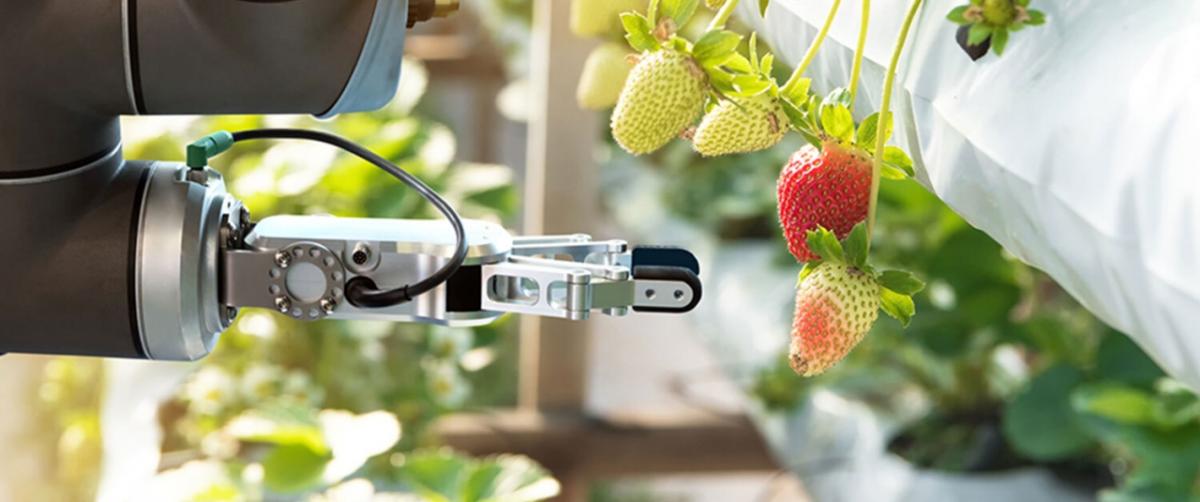Rising to the Sustainability Challenge
Vertical indoor farms are helping farmers reach incredible heights in sustainability
Inside its crystalline sphere, the conditions are always ideal for a winter wonderland — even in the hottest days of summer. So, what if farmers could take this idea and use it to create optimal, self-contained cultivation environments that allowed them to grow their crops during the dead of winter?
A traditional approach to this challenge is greenhouse farming, in which glass or plastic domes heighten and retain solar energy. As a result, the temperature inside the dome stays warmer and more stable, allowing farmers to cultivate warm-weather crops during the cold seasons.
Vertical indoor farms take some of these advantages, such as controlled indoor conditions and electronic efficiency measures, to the next level. In fact, a single vertical farm can grow 4 hectares (10 acres) — or roughly five Olympic-size swimming pools — worth of food on less than half a hectare of land, making it ideal for urban areas and in preserving space for biodiversity.
Vertical farms are on the rise
There are currently 204,387 sq m (about 2.2 million sq ft) of indoor farms operating across the globe, and that number is expected to increase almost tenfold to 2 million sq m (about 22 million sq ft) in the next five years. Will vertical farming replace other farming environments? No, but the dramatic rise in indoor farms will help grow fresh produce in new spaces using fewer natural resources, complementing the advancements being made in traditional, sun-soaked, outdoor crops.
Why such an exponential increase in interest and investment in vertical farms? In short, they offer profound potential for sustainability and food security, helping protect our environmental, economic, and societal ecosystems. And they do so while helping to meet the increasing need and desire for locally-grown produce.
Moving indoors to protect the outdoors
The most widely discussed benefit of vertical indoor farming is its ability to greatly conserve natural resources such as water, land, and nutrients while also improving harvests for select crops like leafy greens, tomatoes, berries, and herbs. Interestingly enough, the technologies that vertical farms utilize often overlap those used to optimize the growth of outdoor crops.
The relationship between indoor farms and nature is as interesting as it is mutual. Broadly speaking, vertical indoor farms create ideal growing conditions for plants. They do this by insulating crops from the harsh extremes of climate change and seasonality. At the same time, these self-contained, precision growing systems protect the exterior environment by conserving natural resources and limiting inputs. And of course, the benefits don’t end there.
The novel growing environment can contribute to a reduction in both food loss and food waste. Shorter growing cycles mean more flexibility for plant growth. And the controlled process delivers a fresher, more consistent, and (in many cases) locally-grown product to consumers.
|
Frost can’t bite so farmers can grow their crops year-round. |
|
|
Pests can't pester so farmers can dramatically reduce inputs. |
|
|
Nutrients stay put so farmers can conserve natural resources. |
|
|
Moisture is recycled so farmers can use virtually every single drop to increase water efficiency by up to 90%. |
|
|
Land is (barely) needed so farmers can grow enough with less. |
Helping lift the economy
A few years ago, many viewed vertical farming as largely theoretical. Today, the practice has blossomed into a major worldwide industry with a current market value just shy of €13.4 billion (or $15 billion) annually.
One of the biggest reasons vertical farming is now feasible is due to the advancement of sensors, smart energy systems, and other technologies that make growing more efficient. Just like the many people using smart devices and automation to make their homes more convenient, vertical farms are typically automated to control light, temperature, and water use. They allow farmers to optimize the conditions required for growing to produce the food that consumers want most at the store.
These next-tier structures help realize the full potential of seed genetics, using data, AI, and machine learning to bolster efficiencies, save resources, and reduce the cost of growing crops vertically.
Modern technologies can drastically reduce the overall energy consumption of specific plants. Some systems can even use cameras and sensors to assess when crops are ready for harvest. Identifying exactly when to pick specific plants, this process has already been shown to significantly reduce the food waste that sometimes comes with full-field harvests.
Technologies don’t have to be extreme to make a significant difference in vertical farms. Even subtle innovations like advanced LED bulbs are helping to cut costs, increasing energy efficiency while drastically reducing heat waste within the system.
Taken together, vertical indoor farms and automated technologies are producing a 100-fold increase in efficiency to generate 10 times the harvest while using only one-tenth of the resources. That’s a pleasing cost-to-benefit ratio, especially when you consider that many of these digital tools are bringing similar results to outdoor farms.
The rise of social standards The breakthrough of vertical indoor farming is driving positive social change as well. Because indoor farms can operate anywhere, they are not subject to the same geographic or environmental limitations of outdoor farms. In fact, they are already building communities by bringing fresh produce to people in areas that are removed from farms, markets, and grocery stores.These hyperlocal indoor farms are breaking down many other boundaries typically associated with our food system. In urban environments, farmers are making use of repurposed shipping containers and abandoned buildings to bring food closer to the fridge. This shortened supply chain reduces the reliance on fossil fuels to transport produce from far-away farms, while also reducing the loss of food that gets damaged or spoils along the journey. The close proximity of vertical indoor farms within more urban areas also helps farmers encourage their new neighbors to become more engaged in collectively building a more sustainable future.
On a global scale, the cost efficiencies of vertical farming are becoming increasingly available to both industrialized and developing nations. Particularly in Asia, where land is not always available to grow enough food, government and private sector groups are supporting research to lower the threshold for vertical farms. The result? Greater food security and a meaningful impact throughout the region — and by extension, across the globe.
Taking agriculture to the next level
As climate change and a growing global population continue to raise the stakes for our food system, vertical farming is emerging as one of many complementary solutions in our collective pursuit of sustainability.
Leaps by Bayer and Singapore-based Temasek have already joined together to form Unfold Bio, an innovative company focused on developing vegetable seeds for vertical farming. Their goal? To grow new varieties of crops paired with agronomic advice, suited for the unique indoor environment of this rising industry.
Companies like Unfold hope to supply restaurants, airlines, schools, hospitals, businesses, grocery stores, and on-line delivery services — both in city centers and throughout food deserts — with fresh, sustainable, and hyper-local produce with a smaller ecological footprint.
What’s more: vertical and outdoor farms are exploring parallel paths of innovation to create technologies that fuel the potential of every farm. With these ongoing breakthroughs in robotics and AI, people from city-centers to developing countries can enjoy new relationships with the possibilities, vision, and resourcefulness of modern agriculture.



